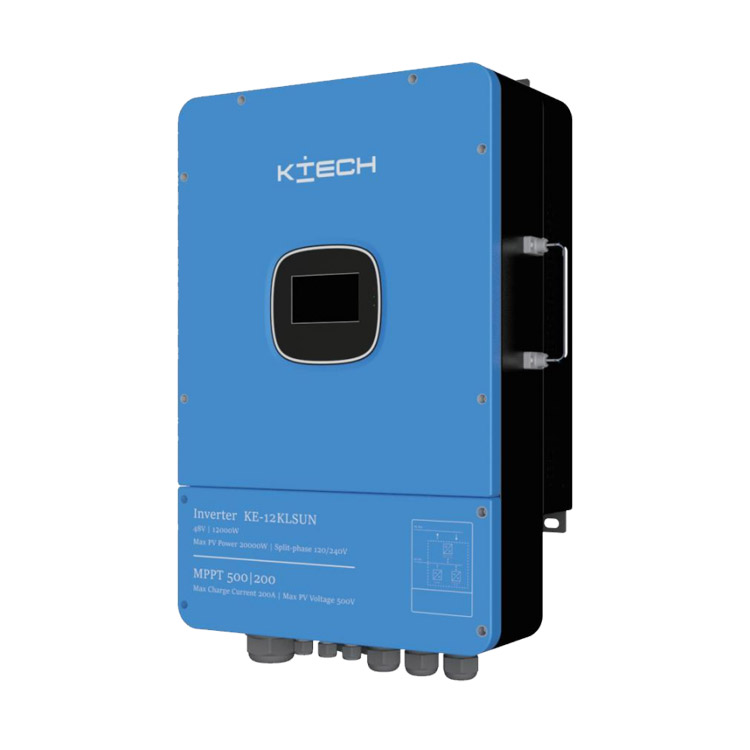Life Expectancy of a Hybrid Inverter
2024-11-29
The life expectancy of a hybrid inverter, which is used in solar energy systems to manage the flow of electricity between solar panels, batteries, and the grid, typically ranges from 10 to 15 years. However, several factors can influence this lifespan, including the quality of the inverter, environmental conditions, usage patterns, and maintenance practices.
Here’s a more detailed breakdown of the factors that impact the life expectancy of a hybrid inverter:
1. Quality of the Inverter
The build quality and components used in the inverter are critical in determining its lifespan. Higher-end inverters, often made with more durable and higher-quality components, tend to last longer than cheaper models. Inverter brands with strong reputations for quality typically offer better warranties (usually between 5 and 10 years) and may last closer to the higher end of the 10–15-year range.
2. Environmental Conditions
The environment in which the inverter is installed can have a significant impact on its lifespan:
- Temperature: Inverters can overheat if exposed to high temperatures, which can shorten their lifespan. Inverters designed for hot climates typically have better cooling mechanisms or are rated for higher temperatures.
- Humidity: Excess moisture or humidity can cause corrosion and damage internal components, which is why inverters should be installed in dry, well-ventilated areas.
- Dust and Pollution: Dust, dirt, and airborne pollutants can accumulate on the inverter’s components, leading to overheating or electrical malfunctions if not cleaned regularly.
3. Usage and Load
The way the hybrid inverter is used can also affect its longevity:
- Load Cycles: Hybrid inverters often experience frequent charging and discharging cycles (especially when integrated with batteries), which can wear down components over time. Inverters that are frequently operating at their maximum load or near it may experience a shorter lifespan than those operating at lower capacities.
- Grid Interaction: Inverters that are connected to the grid often handle more complex tasks, such as managing power flows to and from the utility grid, which may impact their overall wear and tear.
4. Maintenance
While hybrid inverters generally require minimal maintenance, keeping them in good working order can extend their life expectancy. Some maintenance tasks that can help include:
- Regular cleaning: Removing dust and debris from vents and fans can prevent overheating.
- Monitoring: Many hybrid inverters come with remote monitoring features, allowing users to track performance and identify issues early.
- Firmware Updates: Ensuring the inverter’s firmware is up to date can help improve its efficiency and longevity.

5. Warranty and Manufacturer Support
Most hybrid inverters come with a warranty that typically lasts between 5 and 10 years. However, many inverters can continue to operate beyond their warranty period if well-maintained. Some manufacturers may offer extended warranties for an additional cost, which can provide added peace of mind.
6. Battery Impact
In hybrid solar systems, the longevity of the batteries used in conjunction with the inverter also plays a role. Batteries generally last between 5 and 15 years, depending on the type (e.g., lithium-ion or lead-acid). If the batteries are frequently cycled or poorly maintained, they may shorten the inverter’s life due to the increased strain on the system.
7. Technological Advancements
As hybrid inverters are electronic devices, technological advancements may also affect their lifespan. Older inverters may become obsolete as newer, more efficient models are developed, which could lead to manufacturers ceasing production of replacement parts or support. In such cases, users might opt to replace the entire system rather than repair an older unit.
Conclusion
The typical life expectancy of a hybrid inverter is 10 to 15 years, with the possibility of longer operation if the system is high-quality, properly maintained, and used in favorable conditions. As with any solar system component, regular monitoring and maintenance are key to maximizing the inverter’s longevity. Additionally, investing in a reputable brand with a solid warranty and customer support can further ensure the inverter continues to perform well over time.


